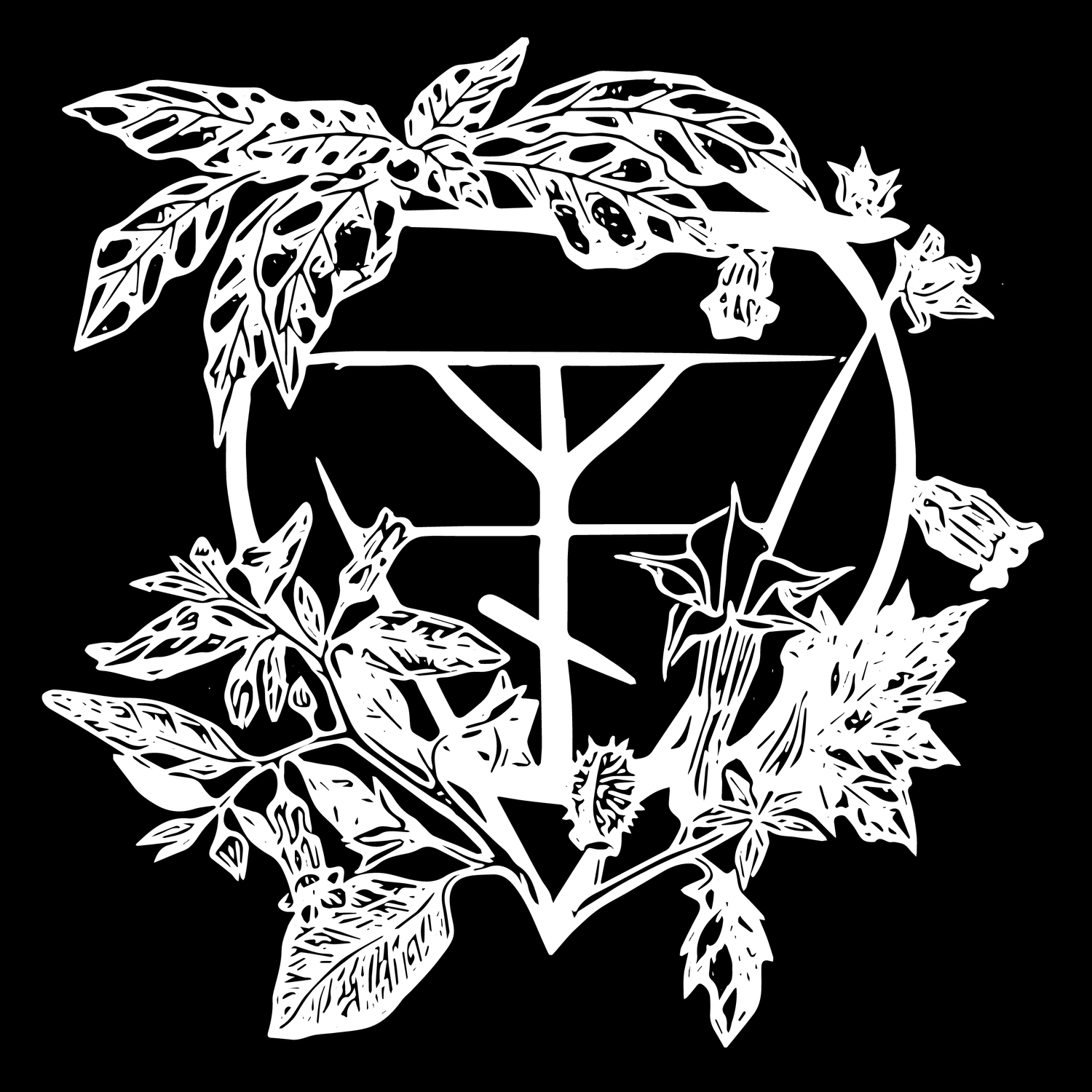Foxglove: Digitalis and the Faery Realm
JULY 2, 2019 BY Coby Michael
Foxlgove, Sentinel of the Faery Realm
The Queen of Elphame, the Faery Queen is an important figure in traditional witchcraft. With her consort the King of Elphame they rule over the People of Goda as they are known in the initiatory tradition based on the teachings of Robert Cochrane, the Clan of Tubal Cain. Foxglove or Digitalis purpurea, one variety of the plant has gone by many names that indicate its connection with the Faery Realm and the beings that populate it. It was called Finger Flower, and in German, Finger-hut for its thimble like shape. It was also known as Goblin’s Gloves, Fairy Gloves or Caps, and Witches’ Bells. In Ireland the tall growing plant was known as Lusmore or the Great Herb. It originally belonged to the Scrophularius family known as the Figworts, which have similar characteristics including: square stems, opposing leaves and two-petaled flowers. It now belongs to the large genus Plantaginaceae.
According to Plant Lore, Legends and Lyrics, the name Digitalis from the Latin “digitale,” meaning a thimble or “finger stall” was given to the plant in 1542. It was also referenced to a medieval instrument known as the tintinnabulum, constructed of a ring of bells hanging on an arched support, that the plant resembled.
It was said that fairies hid inside of the large cup-like flowers of the Foxglove, and a bent stalk denoted the presence of supernatural beings, weighing down the plant. Foxglove is a perennial woodland plant, which is a biennial, producing flowers in its second year. The recognizable purple-pink bells are often seen in works of art depicting fairies and other magical creatures, often alongside the magic mushroom Amanita muscaria. Foxglove like the magic mushroom is connected to the Otherworld by its visionary properties and assists one in communicating with beings from this realm.
Great Herb of Venus
The plant is Venusian in nature, denoted by its lush leaves and bell-shaped flowers, but more so through its action on the heart. As a homeopathic remedy, it is used for healing the heart and emotional body, bringing love into the aura. It helps to dispel fear by bringing strength and courage. It is also used to bring a sense of comfort to those who feel unloved and abandoned. Chemically the plant produces a poison, called Digitoxin, which has a powerful effect on the heart causing a dramatic cardiac response. It is still used in modern medicine in certain heart medications, although rarely. It has been used to treat congestive heart failure and arrhythmias. Even in small doses the toxins of this plant can cause cardiac arrest and heart failure
In this sense, Saturn is not the only ruler of botanical poisons. Venus is connected to Veneficia, for which the crime of poisoning was named, including aphrodisiacs and abortifacients in addition to being synonymous with witchcraft and sorcery.
In magical practice this other worldly herb can be employed in matters of love. The fresh flowers may be used in spells that open one’s heart to the idea of love, while dried flowers may be used for the opposite. The extracted juice can be used to charm objects for protection against malicious fairies and other spirits. It can also be used in charms for astral flight, and journeying to the Underworld where the King and Queen of Elphame rule. Charms of Foxglove protect the bearer allowing them to pass into this realm and return safely. Alternately, the juice from the plant can be used to negate the harshness of iron blades when their use is desired in conjunction with the more delicate powers of nature.
The cuplike flowers can be used fresh to hold small amounts of milk and honey meant as offerings for the fair folk. Ensorcelled water held within this natural container may be used to anoint the eyelids to better peer into their world. Another sacrament, known as the Rite of the Poisoned Chalice may be enacted with the aid of Foxglove. Being used as a sacred vessel to ritually imbibe the energy of this plant through a small amount of water drank from this tiny floral cup. The bell-shaped flowers may also be strung along a thread and hung as an offering when working spells of glamour and enchantment, for which the Fair Folk are most adept.
In the 18th century women of the lower classes found an inexpensive, and dangerous intoxicant in Foxglove. They would drink tea brewed from this plant containing potent cardiotoxins. Ornamental strains of D. purpurea contain lower quantities of the active compounds. The plant contains highly active glycosides, which are extremely dangerous when isolated. In plant form, combined with less potent compounds it is still poisonous, but not as potent as its pure form. It is a counter toxin to Wolfsbane and can be considered just as potent.
Digitalin is still used today in modern medicine. Symptoms of poisoning include dizziness, vomiting, cardiac arrythmia, delirium, hallucinations and seeing blue. Low doses of the plant have been used in medicinal preparations. However, the medicinal dose and the toxic dose is precariously close. Just .3g of dried leaves can be toxic to adults. Foxglove is a beautiful plant to grow, and it is a potent magickal herb with many applications. Ingesting Foxglove in any way should be avoided.

